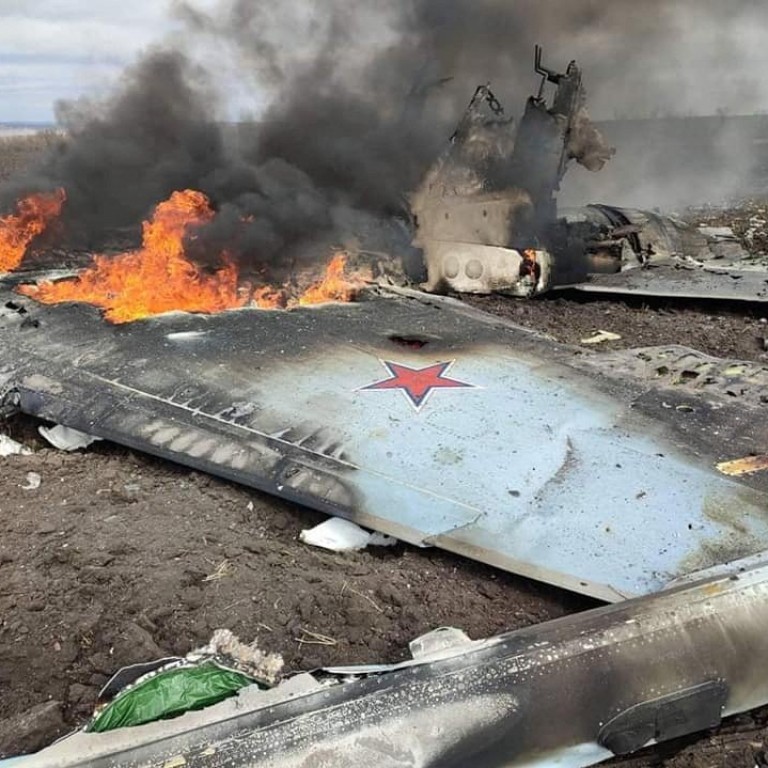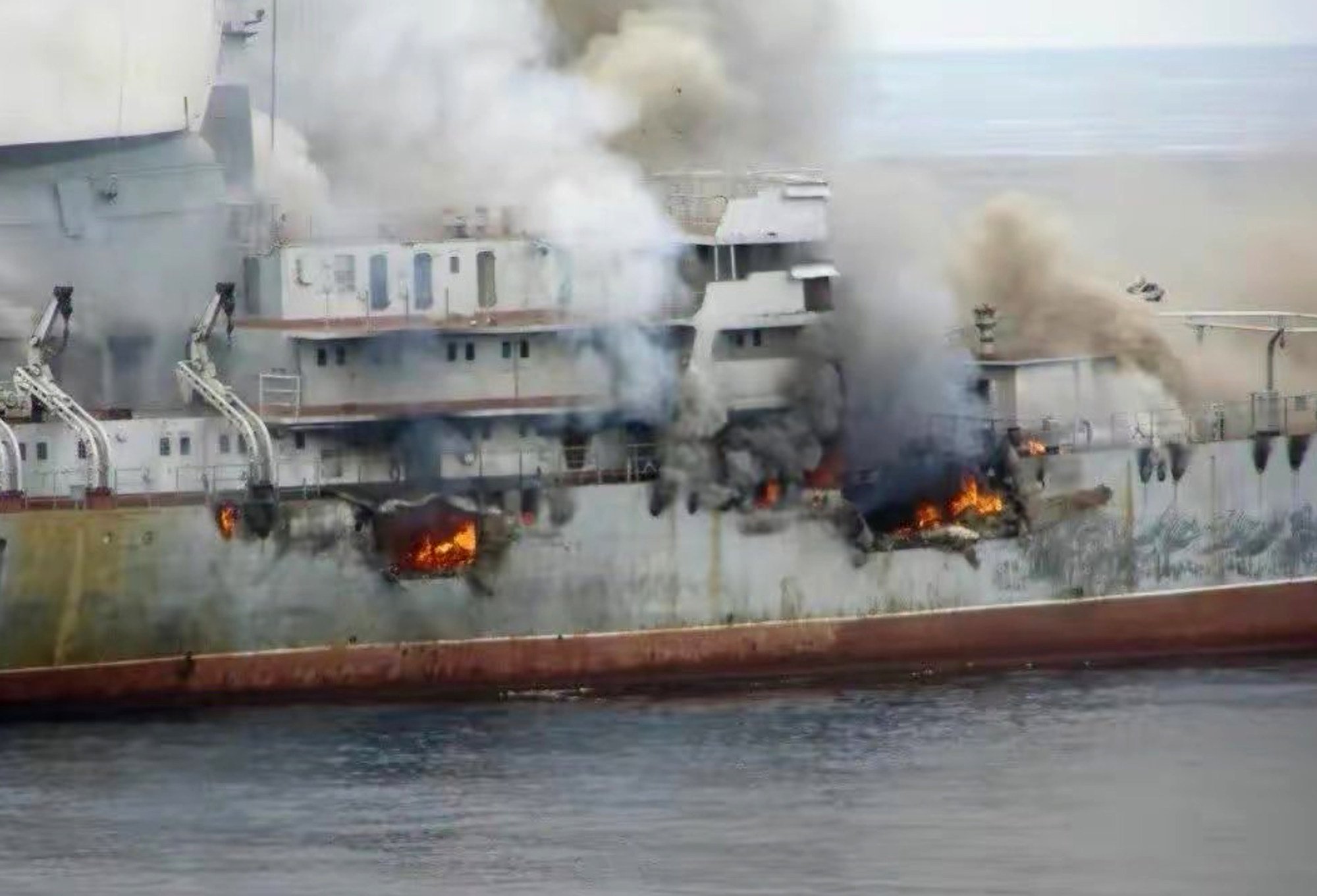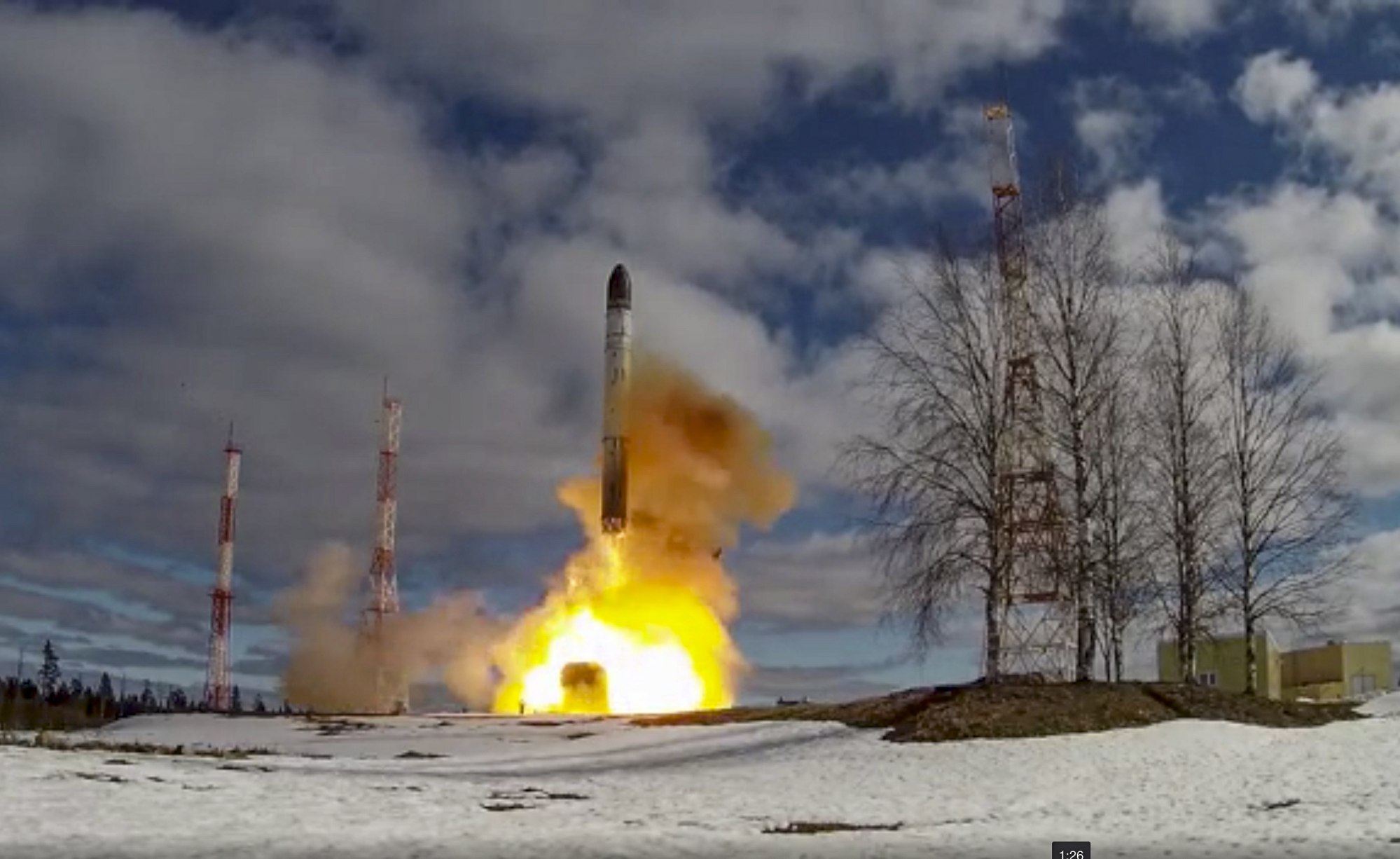
Russian military hardware wrecked in Ukraine war could ‘lower demand’ in Southeast Asia
- From Vietnam to Myanmar and Indonesia, Moscow’s defence clients may look elsewhere for arms after witnessing its forces’ poor performance, a new report says
- As the Ukraine conflict impacts supply, buyers could turn to India for spare parts — or even seek alternatives from North Korea
A recent report by the Singapore-based ISEAS-Yusof Ishak Institute found that the conflict has damaged the reputation of Russia’s defence equipment in Southeast Asia, once a source of considerable revenue for the country.
Russia has been the largest exporter of arms to Southeast Asia over the past two decades, but since 2014, the value of its defence sales to the region has plummeted.
The Ukraine war will make it difficult for its defence industry to revive sales, and is likely to lead to further declines in arms exports to Southeast Asia, according to the report’s author, Ian Storey, a senior fellow at the ISEAS-Yusof Ishak Institute.
“The Russian armed forces’ poor performance on the battlefield has caused significant reputational damage to Russian-manufactured military hardware,” Storey said.
Buyers eyeing specific pieces are now said to be nursing doubts.
On April 7, one of Russia’s most advanced fighters, a fourth-generation-plus SU-35, was shot down over Ukraine by an anti-aircraft missile.
Vietnam has reportedly been considering purchasing the SU-35, though to what extent this incident will influence its procurement decision now “remains to be seen”, Storey said.
The equipment reportedly destroyed on the battlefield includes tanks also used by Vietnam and Laos, infantry fighting vehicles and armoured personnel carriers used by Indonesia and military attack and transport helicopters used by multiple Southeast Asian countries, Storey said.

Endemic corruption, flawed assumptions
Reasons for the poor performance are manifold, and not all are related to production quality.
Storey pointed to “endemic corruption within the armed forces, resulting in modernisation funds being misappropriated”.
The real failure, said Zachary Abuza of the Washington-based National War College, is not Russia’s equipment per se, but its tactics, incompetent leadership, unmotivated troops and flawed assumptions behind the decision-making to go to war.
Russian equipment has always had a reputation for being fairly cheap but pretty reliable. But now, Abuza said, that is “proving to be less true” as Moscow’s advanced anti-armour missiles and well-armed drones are matched against Ukraine’s “highly motivated and very capable force”.
To replenish its heavy losses, Moscow may direct its defence industrial sector “to divert military equipment manufactured for export to recapitalise its own armed forces”. This will result in delivery delays and possibly cancellations from clients, further damaging its defence industrial sector’s reputation for reliability, Storey said.
Negotiations stalled by the Covid-19 pandemic, too, look unlikely to restart.
Collin Koh, a research fellow at Singapore’s S. Rajaratnam School of International Studies, said: “Vietnam is the staunchest supporter of Russian arms, but Covid-19 has stalled any discussions, especially [about its] long talked about plan to purchase more Gepard light frigates.”
Russia is the world’s second largest arms exporter after the US.
In Southeast Asia, it ranks No 1. Between 2000 and 2021, the value of Russia’s arms exports to the region was US$10.87 billion, followed by the United States (US$8.4 billion), France (US$4.3 billion), Germany (US$2.94 billion) and China (US$2.9 billion).
Russia’s most important defence customers in Southeast Asia are Vietnam, Myanmar, Malaysia and Indonesia.
Russia has offered for sale to these countries a full range of military equipment – from fighter jets and submarines, to tanks and small arms – at prices that are cheaper than those manufactured in the US and Europe.
In addition, Russian defence companies have been willing to accept part payment in commodities, pursue joint production, and, unlike the US and European countries, do not take into consideration a country’s human rights record when selling arms.
Sanctions on hi-tech components
In addition to lowered perceived value, Russia’s defence industry faces other threats.
Economic sanctions imposed by the US, European and Asian countries will make it more difficult for Russian defence companies to conduct financial transactions, including receiving payments from foreign customers.
Equally vital export controls imposed on Russia will restrict its defence industrial sector’s access to advanced technologies critical to the manufacture of modern military hardware, and which Moscow itself does not produce and cannot easily purchase from other countries.
These include semiconductors, microelectronics, machine tools and software.
This will not only affect the production of military equipment for use by Russia’s armed forces and overseas buyers, but also the provision of spare parts, munitions and upgrade packages to existing customers.
“As a consequence, foreign buyers may decide to switch to more reliable sources of military hardware,” Storey said.
Potential disruption to Russian spare parts
Given the war and sanctions, all Southeast Asian countries that currently rely on Russia for major military equipment will be vulnerable to the potential disruption in spare parts supply, Koh warned.
With few exceptions, most buyers of Russian major military equipment heavily depend on Moscow for spare parts as part of after-sales service support.
So, other than some countries that may have already procured a sufficient stockpile to last for a certain period, he said, “we’re talking about the potential disruption in the operability and availability of big-ticket assets such as fighter jets, which means simply disposing of them due to this new problem may not be the desired solution since it may leave significant capability gaps in the absence of a ready, suitable, affordable, and timely replacement”.
Southeast Asian operators of Russian assets are expected to “do their best” to conserve the existing stocks of spare parts, and “possibly also reduce the operating frequencies of their assets” to reduce wear and tear, so they can keep them longer in service, and reduce the need for heavy servicing work, Koh said.
“Meanwhile, they’re likely to try to seek alternative sources. But even those alternative sources, which rely on Russia, are also likely to prioritise their own needs against disruption.”
He added that India might become a potential source of parts for Russian equipment, since its own defence industries have in recent years sought to manufacture some of these items under licence.
“India has already made alternate plans for potential disruption, chiefly by focusing more on ‘made in India’ components to stave off possible shortages,” Koh said, adding that smaller clients such as Indonesia also recently expressed concerns about maintenance, repairs and overhaul of Russian equipment, especially the Su-30s.
Koh said spare parts were an important source of revenue for Moscow – especially when taking into consideration the generally higher level of maintenance Russian equipment requires compared to Western equivalents.

North Korea: potential arms supplier?
National War College’s Abuza said North Korea could potentially try to enter the arms market in Southeast Asia.
Overall, its presence in the region has been limited, with likely buyers of its weapons, ammunition and spare parts being the ones that already favour Soviet-era weaponry, he added.
“I hate to say it, but North Korea could try to stem into the regional market, as they manufacture Soviet-era weapons and ammunition,” he said. “There are a host of United Nations Security Council resolutions establishing trade embargoes on North Korea because of its nuclear proliferation. They need to be imposed.”
With North Korea already selling weapons including missile technology to Myanmar’s military junta, he pointed out: “The international community needs to step up monitoring and interdictions, especially to Myanmar.”
Koh said it was “not wise” to discount the Russians completely, as their military equipment has been generally found by users to be affordable compared to Western equivalents.


